-
Notifications
You must be signed in to change notification settings - Fork 8
Wish This Set May 2023
Wish This Set is a showcase for our passionate community members to write about the games they love that aren't yet represented on the site. Is there a game you'd like to see receive an achievement set? Let us know by sending a private message to {% rauserpic RANews %}. We encourage you to explain what makes the game so special to you, and you may be featured in a future issue of RANews!
| Game | Console | Genre |
|---|---|---|
 Assault Suit Leynos 2 Assault Suit Leynos 2 |
Saturn | Run & Gun |
- Write-up by: {% rauserpic Sines %}
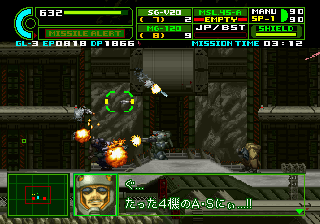
In a time where the hype was mostly reserved for fancy 3D graphics, Assault Suit Leynos 2 chose to stay strong and keep a gorgeous 2D aesthetic. This is the third entry in the Assault Suit series which started on the Mega Drive. It keeps the same action-packed 2D sidescroller gameplay also seen in Front Mission: Gun Hazard. For most of the game the objectives will be to simply "destroy everything", mixed from time to time with a few "protect the ally vehicle", but getting there will be a challenge. While not as hard as the previous entries, Leynos 2 has its moments of frustration when the game will kick you to the ground and force you to get good.
Being a Japan only game with no translation patch around would be a huge barrier of entry for most games, but here it's surprisingly easy to take in. While the story and dialogue are still in Japanese, most if not all of the in-game menus and customization options are written in English, making it a very accessible import game. The main flaw is that it is fairly short overall, encouraging players to replay with different loadouts. It has that arcade feel of wanting players to learn map layouts and enemy patterns in order to get in "the zone" and get a better Score/Rank time after time. Not the most ambitious Saturn title, but it's a great time from start to finish for run-and-gun & mecha fans alike.
| Game | Console | Genre |
|---|---|---|
 Mouse Trap Mouse Trap |
ColecoVision | Maze Chase |
- Write-up by: {% rauserpic Enagonius %}

When it comes to classic consoles, Atari always felt a bit underwhelming for me; not bad per se, but a bit too frustrating regarding controls and responsiveness while also a tad simplistic in the design and creativity surrounding titles made for it. I mostly attrribue this distancing to the fact that I was not raised and educated in that era (SNES was my first home console). Mouse Trap was the first Atari game I mastered here on the site, and it kind of warped that perspective for me, with its simple gameplay loop but interesting variations that aren't based solely on changes of speed and toughness of enemies. The graphics also did nice some basic colouring that helped keep the screen vibrant while resonanting with the imagetic stimulus I was trying to achieve with that generation.
Some time later I get to know the ColecoVision, which immediately stole my heart! Not only did the graphics feel more natural, the ideas for games provided a new look on those types of consoles – it was like getting an updated version of Atari 2600 even if nowadays I learned to respect and admire that console as well. It struck me with curious intent to play (and achieve) a set for a multi-platform game from that era, even if it's an already explored idea way too similar to a certain fruit-eating character that caused a huge impact in the industry through arcade games and then on home consoles. Mouse Trap gives its own touch to a game we already know, and I'm driven by curiosity to learn more about ported games on consoles from that era.
| Game | Console | Genre |
|---|---|---|
 Syvalion Syvalion |
SNES | Shoot 'em Up |
- Write-up by: {% rauserpic heintsi %}
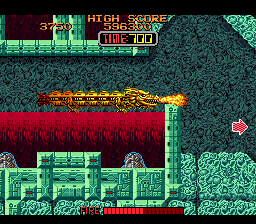
Syvalion may look like an ordinary arcade shooter at first glance, but it offers much more than that. Syvalion, originally an arcade shooter made in 1988 for Arcade, was ported to the Sharp X68000 in 1990 and 1992 to SNES. This rather unknown game was developed by Taito, and only released in JP and EU, making it even more of an unknown title.
In Syvalion, there are three modes: Basic series, which is basically a tutorial that goes through pre-defined mazes and teaches you the basics of the game. I’d say that’s pretty rare for any game this old. Then there's the Real Combat series, which is the main mode of the game and runs you through different scenarios and maze layouts. More on the randomness later. Finally, there's a Time Attack mode in which the goal is to get the most points in one life (great Leaderboard of the Month material right there).
Unlike typical shoot-'em-up games, Syvalion allows you to freely maneuver your dragon while shooting fire and gathering power-ups from enemies. The better you perform, the better upgrades you get. The dragon's color indicates the ship's health, and there's also a meter for breathing fire that depletes if you overuse it.
Second, each time you boot up the game, you’ll get a different story and maze layouts. Most of each playthrough is randomized. Yes, there are supposedly 100 different endings (text only, sadly) and many story prompts, which either make sense or don’t. One silly excerpt from many possible story prompts goes like this: "My dead sister will never return again but I was able to take revenge by chance like this, and saved the earth’s danger!!" Yes, the system isn't perfect, but I think it was a pretty cool idea at the time, and sometimes those bad translations are rather entertaining to read. Bosses, however, are always the same, leaving some opportunities to create damageless challenge achievements. I mean, it could be neat to have achievements for each ending too, if you want to go crazy.
The game is pretty forgiving too; with unlimited continues and a pretty short playthrough, it makes the game a rather fine choice to play in short bursts.
Whether you're a fan of shooters or a complete newcomer to the genre, this obscure shooter might be a game worth checking out.
| Game | Console | Genre |
|---|---|---|
 Batman & Robin Batman & Robin |
PlayStation | Action |
- Write-up by: {% rauserpic groundedshikami %}

Batman & Robin is a 1998 third-person exploration/action game that was released for the PlayStation 1 by Probe Entertainment. The game is based on the 1997 film of the same name. You can play as Batman, Robin, or Batgirl and go up against Mr. Freeze and Poison Ivy. It also acts as a sequel to the Batman Forever game (released on SNES, Genesis, GB, and Game Gear among others).
Gameplay: B&R is an open-world sandbox game in which you explore Gotham both on foot and in a vehicle (Batmobile, Redbird Motorcycle, or Batblade depending on your character). As you travel around the city, you need to find clues in order to determine where the current villain is planning to attack before heading there at the time of the attack in order to stop the villain. The game has a few puzzle elements (using the Batcomputer to examine the clues to find the time/place of the heist for instance). Driving & combat are a bit clunky, however I personally find them enjoyable.
Storyline: The game follows the storyline of the film, with several other heists NOT shown added in to increase the game length. The game starts with Mr. Freeze attempting to steal various jewels in order to continue his research into a cure for his wife's condition, before continuing with Poison Ivy and Bane, whom you must defeat at various locations to stop their crimes and in order to find her lab to gather items to defeat her. Finally, the three team up in order to freeze Gotham and you must stop several heists before the grand finale - the observatory from the film.
Graphics: B&R's graphics look really good for a PS1 game, as you go from iconic locations such as the Batcave and Axis Chemicals to movie-specific ones like the Museum and Observatory - you can tell that a lot of effort went into the graphics for its time. The game does have a low draw distance, however, and that is most likely due to the limitations of the PS1.
All-in-all, Batman & Robin for the PS1 is an interesting take on what is seen as the worst Batman film. Sure it has its bugs and issues, and the "gotta work out how to do things yourself - sometimes through trial and error" gameplay can be frustrating, HOWEVER when comparing it to other Batman games - I would say it is definitely worth a look and ultimately a set.
| Game | Console | Genre |
|---|---|---|
 Builder's Block | Landmaker Builder's Block | Landmaker |
PlayStation | Arcade, Puzzle |
- Writeup by: {% rauserpic WanderingHeiho %}
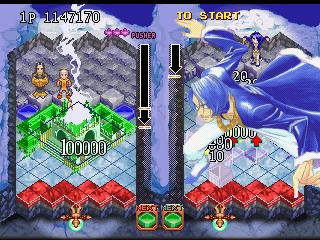
Originally titled Landmaker, it was a Japan-only arcade game similar to Puzzle Bobble. The PS1 version also included a puzzle mode, but the main gameplay is the same between the two modes. Speaking of the gameplay, how does this game work?
Basics: Players launch squares into an isometric grid and have them bounce off other squares to try and make larger squares of the same color (2x2, 3x3, 4x4, etc.), which would transform into buildings of larger and larger size. If a launched square touches the sides of different colored squares, then those other tiles would change color to the launched one. And if you were to hit a square’s corner with the same color, then both of them would vanish. If you make a building vanish, it will leave a 1x1 tile behind, with its effect being based on how large the building was. For example, a 3x3 building will leave behind a star tile, which removes all tiles of the color you hit it with, and a 4x4 building leaves a moon tile, change all tiles to the color you hit it with! That’s all of the basics, so what does Arcade and Puzzle mode provide?
Puzzle Mode: This was the new content added for the PS1 release. Your goal is to clear multiple stages by creating buildings of a certain size or better. Each stage gives you a unique pattern or starting tiles that you will either need to clear, change the color of, or add squares in the spaces to. But there’s a catch - you have a limited number of moves before the back of the field moves forward. If a tile gets pushed off the field, or if there is no longer enough room to make the required building size, you fail the stage and have to retry it. Thankfully, there is no countdown before the tile is launched, so you have as much time as you need to plan out how you will try to make the building. In addition, creating the required building size will reset the number of moves you have before the back of the field moves, why is that important? Bonus points. While you can just finish the stage once you’ve made a large enough building, you get more points for going beyond the requirement and making an even larger building (like making a 5x5 when you just need to make a 4x4). The larger the building past the requirement you make, the more points you get (1 tier above is 10,000,000, 2 tiers is 30,000,000, and 3 tiers is 100,000,000!). Why worry about points? Because you’re ranked on how well you did at the end of each set of stages.
Arcade Mode: The original arcade game is here! Fight in a series of 1-on-1 fights, making and destroying buildings to add garbage to your opponent’s side, while also trying to push back the wall that slowly covers your field. There are eight characters to choose from, each with their own garbage types that they send to the other player. And from what I’ve heard, there’s a special fight if you can reach the end without using continues.
Overall, Builder’s Block is a fun and addicting puzzle game that I keep finding myself coming back to, even if I’ve never found myself really good at it. Hopefully it gets a set one day.
| Game | Console | Genre |
|---|---|---|
 Liberty or Death Liberty or Death |
Mega Drive | Grand Strategy |
- Writeup by: {% rauserpic Whynot15 %}
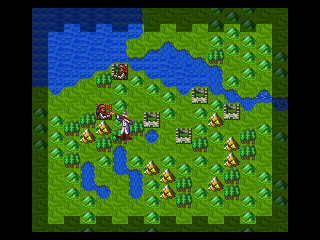
Do you watch History Channel specials on the American Revolutionary War, powdered wig perfectly done as you critique the British Empire's blunders and wistfully muse how you would have been 10 times the general George Washington was? Probably not, that's a pretty niche scenario. Nevertheless, Liberty or Death perfectly represents this highly specific niche.
A few decades ago, before becoming most known for myriads of Dynasty Warriors spinoffs and sequels for virtually every franchise under the sun, Koei was known for producing a huge quantities of simulation games, from historical war games to airline managers. Its flagship series was Romance of the Three Kingdoms, which garnered the biggest fanbase and multiple spinoffs, including the juggernaut Dynasty Warriors franchise. The other games, like Nobunaga's Ambition, Aerobiz, and (of course) Liberty or Death, among others, are fondly remembered by diehard strategy game enthusiasts.
Much like the title suggests, Liberty or Death lets you assume the role of either George Washington and Colonial America, determined to cast of the yoke of British rule and form a new nation, or Thomas Gage and the British Empire, looking to crush their rebellious colonies and restore order to their colonies. The two sides have the same main objective - control all territories and claim total dominance. Despite this shared goal, the two sides are very asymmetrical. The British Empire has a significant early game edge, with a budget that dwarfs the fledgling Americans and a massive navy that will face literally zero opposition in the early goings, alongside vastly superior soldiers and professional mercenaries compared to early American militias. Washington and Continental Congress, on the other hand, have the homefield advantage, able to move and recruit new troops much easier than their foes, have access to better officers overall, and can wait out the clock on the British by stalling until 1820 as an alternative win condition (for comparison, the Revolutionary War ended in 1783 in real life).
Like other Koei historical simulation games of this era, the game is chock full of details. Fighting and winning battles is just one part of a larger whole. You also need to, among other things: hire and pay officers; build up support for your side in territories; draft, train and arm troops; Maintain supplies of food, weapons and ammo; Deal with your respective governing body for support in the wartime efforts.
You'll have a level of control that may seem overwhelming at first. You will decide on where to send which regiments, exactly how much officers will be paid, and who will train troops, spread propaganda, and buy supplies each turn, among much more. It is truly a lesson in "logistics win wars."
Despite having just one scenario to play, there is a ton of potential in a set for this game. Outside winning as either side on the three difficulty levels, there are numerous historical events that can be triggered and interesting challenges to impose on both sides. As Washington, can you survive an attempted mutiny by your officers and still emerge victorious over the British? As the British, can you defeat a seemingly invincible Spanish navy that emerges late in the game? There is a lot of ground for a very in-depth set that would please strategy fans and historic buffs alike.
| Game | Console | Genre |
|---|---|---|
 Rumble Racing Rumble Racing |
PlayStation 2 | Racing |
- Writeup by: {% rauserpic ViceroyOfMonteCristo %}
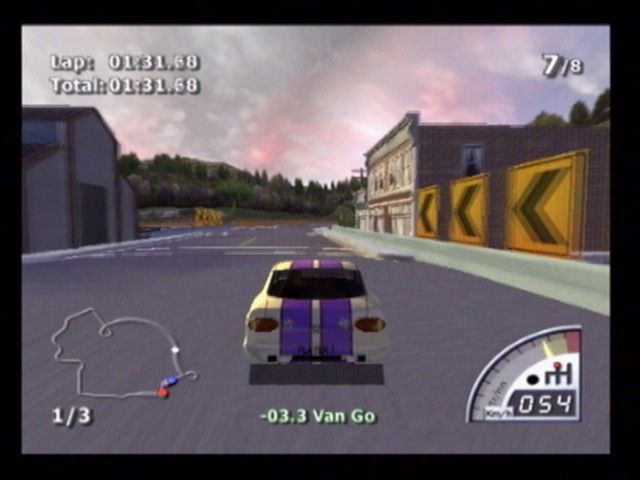
In the late 1990s and early 2000s, EVERYONE wanted to hop onto the combat racing genre that was popularized by Mario Kart 64. Naturally you had other franchises hop on with direct Kart Racing clones, such as Crash Bandicoot in the form of Crash Team Racing, or Sonic in the form of Sonic Drift, but there was a small group of companies that put out combat racing games that weren't based off one of their own IPs. NASCAR Rumble was an example of that on the PS1, with EA choosing to use actual NASCAR vehicles in place of go-karts. What resulted was a surprisingly competent racing game, and naturally EA wanted to bring that success to the PS2 era.
In a very uncommon move, EA decided to follow up the success of NASCAR Rumble by not renewing their license with NASCAR and instead making a sequel with entirely original content. If you enjoyed the first game, Rumble Racing builds on it well with better item pools (only human players can get tornadoes, and only when in the bottom of the pack), better AI balancing (the other racers no longer spam tornadoes and freeze balls at you every 5 seconds), and overall better vehicle handling than before. In addition to all this, they've also added a stunt system which rewards you with boost for each one you successfully perform while airborne.
While it may have a smaller track pool than the original (with 2 tracks in this game being remasters of tracks from the first game), each one is much more distinguishable in its style and layout than before. Additionally, the game's specialty cars (unlocked by finding and destroying a literal Easter Egg in each track) are less generic and more absurd than the first game, such as a pickup truck with a missile strapped to its bed, a car whose entire chassis is a jet engine, and a fighter jet body on wheels.
Rumble Racing is much more of its own game than its predecessor, given that EA no longer had to rely on an existing licensed IP to draw in players, and it certainly shows it in regards to both visual style and gameplay. It's not the most difficult or lengthy game, but it's also because of those things that I have a tendency to replay it once a year or so. I'd highly recommend this game to both new and experienced arcade racing fans alike.
| Game | Console | Genre |
|---|---|---|
 Contra: Shattered Soldier Contra: Shattered Soldier |
PlayStation 2 | Action |
- Writeup by: {% rauserpic guiltchip %}

Konami's Contra: Shattered Soldier, originally released as Shin Contra (真魂斗羅, Shin Kontora) in Japan, is a game that deserves an achievement set. Developed by Team Kijirushi, a group of staff members within Konami Computer Entertainment Tokyo, the game marks a return to the two-dimensional gameplay style employed by the series prior to Contra: Legacy of War.
The game is played entirely in 2D from a side-view perspective, with fully polygonal graphics. The controls and abilities are similar to the ones featured in Contra III: The Alien Wars. One major departure in Shattered Soldier is the omission of power-up items. Instead, the player is equipped with one of three permanent weapons that can be switched at any point, each with a standard automatic shot and an alternate charge shot, for a total of six types of shots.
The game introduces a "hit rate" system which gauges the number of enemies destroyed as a form of performance metric. Every unique target that is destroyed in each stage, whether it be an actual enemy or an object in the area, increases this ratio. A high hit-ratio, along with the minimization of lives lost and continues used, is essential to receive the better endings, and consequently unlock additional extra features.
Like Contra: Hard Corps, Shattered Soldier has multiple endings, but the ending received now depends on player performance, rather than the path taken during the course of a game. The player can replay previously completed stages to achieve better grades before proceeding to the fifth stage. After that point, the player must play through the remaining set of stages continuously.
Despite its impressive gameplay mechanics and performance metrics, Contra: Shattered Soldier currently does not have an achievement set. However, this game certainly deserves one. The hit rate system, coupled with the need for a high hit-ratio and the minimization of lives lost and continues used, makes for a challenging and rewarding experience for hardcore gamers. The addition of achievements would not only add to the game's replay value, but also provide an additional layer of challenge and satisfaction for players who aim to obtain 100% completion.
In conclusion, Contra: Shattered Soldier is a game that not only delivers a fun and exciting experience but also challenges players to improve their performance. Its unique gameplay mechanics and performance metrics make it a perfect candidate for an achievement set. For hardcore gamers who are looking for a game that rewards skill and perseverance, this game should not be missed.
| Game | Console | Genre |
|---|---|---|
 Tokyo Xtreme Racer: Drift 2 Tokyo Xtreme Racer: Drift 2 |
PlayStation 2 | Racing |
- Write-up by: {% rauserpic WeerDough %}

Tokyo Xtreme Racer: Drift 2 is a bit of an odd duck, a late entry in Genki's niche series of racers, normally about highway racing, though Drift 2 drops all of that and opts for mountain battles à la Initial D. It was released in 2007 on the PS2, two years after the Japanese release as "Kaido Battle 3" (Yes, 3. They skipped Kaido Battle 2 in the US). It was also one of those games that was universally panned by critics, but beloved by fans. It certainly falls into the category where you have to already love racing games to enjoy it, as it's a far cry from any Need for Speed or Midnight Club of the era. In fact, many compare it to Gran Turismo in how it drives, as well as the wide variety of vehicles and depth of tuning for your machine. While it probably isn't quite on that level, it's still impressively close and perfectly hits that niche of "console realistic" where it can still be played with a controller, but you need to know what you're doing or else you'll be eating guardrail again and again and again.
The gameplay is split up into two segments, daytime racing and nighttime racing. During the day you're mostly doing sanctioned racing, such as time trials or drift challenges, in order to impress sponsors, make money, and upgrade your machine. However, it's during the night where you find the real meat of the game. It's here you engage in duels with hundreds of rival racers, each with their own name, their own biography, and their own profile. You can even befriend other drivers through winning and gain access to borrow their car. Befriend all racers subset, anyone?
All of this leads to you getting caught up in a power struggle between rival racing teams which plays out both on the mountains, and on an in-game message board that's used to present most of the story. It's very brief, and completely ignorable if you couldn't care less about the story of a racing game, but adds just enough mystery into the mix to keep you hooked without being overbearing.
As I said before, TXR Drift 2 is a niche game. It was built on a budget but by a team dedicated to the genre and car culture in general. A LOT of love and passion went into the game and it shows. Even by today's standards, Drift 2 is an incredible and underrated gem of a game that deserves every bit of appreciation it can get.
| Game | Console | Genre |
|---|---|---|
 Tales of Innocence Tales of Innocence |
Nintendo DS | Action RPG |
- Writeup by: {% rauserpic Nepiki %}
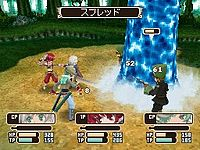
Tales of Innocence is one of the few remaining mainline Tales games that had the unfortunate fate of never seeing the light of day in the west. Even when it got a remake on the PlayStation Vita like Tales of Hearts R did, they decided not to bring it over. And that is a shame since Tales of Innocence is an interesting release in this series. The story focuses on a group of characters who, despite living a normal life, are actually reincarnations of divine beings who tried merging their world with the human world many years ago but succeeded only partially due to not everyone being in agreement. Our main protagonists are conveniently the reincarnations of avatars who had an important role in this event, and when their powers start to slowly awaken, the actions of their past life starts having an impact on who they are now. Who may have been a friend otherwise may now end up on the enemy side, and vice versa. Not to mention that the entire world of this game is at war with each other, partially fueled by the awakening of these reincarnations. It's an interesting tale for sure, but the character relationships is arguably what caught me the most. Both Ruca Milda and Spada Belforma are some of my absolute favourite Tales of characters, and Illia Animi completes the group triangle of loveable friends who may or may not want to bully Ruca a bit too often, but with good intentions.
But most impressively, Tales of Innocence follows up after Tales of the Abyss, one of the most acclaimed 3D titles in the franchise. And instead of going the route of 2D that Tales of Hearts went, they continued making this a 3D Tales of games on the Nintendo DS. Free movement, Mystic arts; everything is here. The game still looks good and the story is mostly voiced, making this a seriously impressive game on the system. Of course it is still a Nintendo DS game at heart, so don't expect the gameplay to be as expansive as most 3D titles, but it still works well for what it is and really encourages the player to combo artes together. The only real downside, if my memory serves me right, is that the dungeons were a bit lame to go through, feeling more like afterthoughts and having a bit of an uninteresting, unrewarding maze-like design. Still, this is a highly underappreciated title in the franchise that I certainly recommend giving a look. Fortunately, the Nintendo DS version comes with an excellent fan translation, so we can all enjoy it!
Milestones - RAnniversary - Play This Set - Wish This Set - Top Masteries - RA Fan Art
Milestones - RAnniversary - Play This Set - Wish This Set - Top Masteries - RA Fan Art - Editorial: Xbox Originals Preview by mywifeleftm
Milestones - RAnniversary - Play This Set - Wish This Set - Top Masteries - RA Fan Art - RIU Editorial 1: If I Had an Xbox by Campingcam - RIU Editorial 2: IWDM's Top 10 Video Games of 1995
Milestones - RAnniversary - Play This Set - Wish This Set - Top Masteries - It's a Long Way to the Top - crrool interview by sioneus - Rack It Up: Editorials